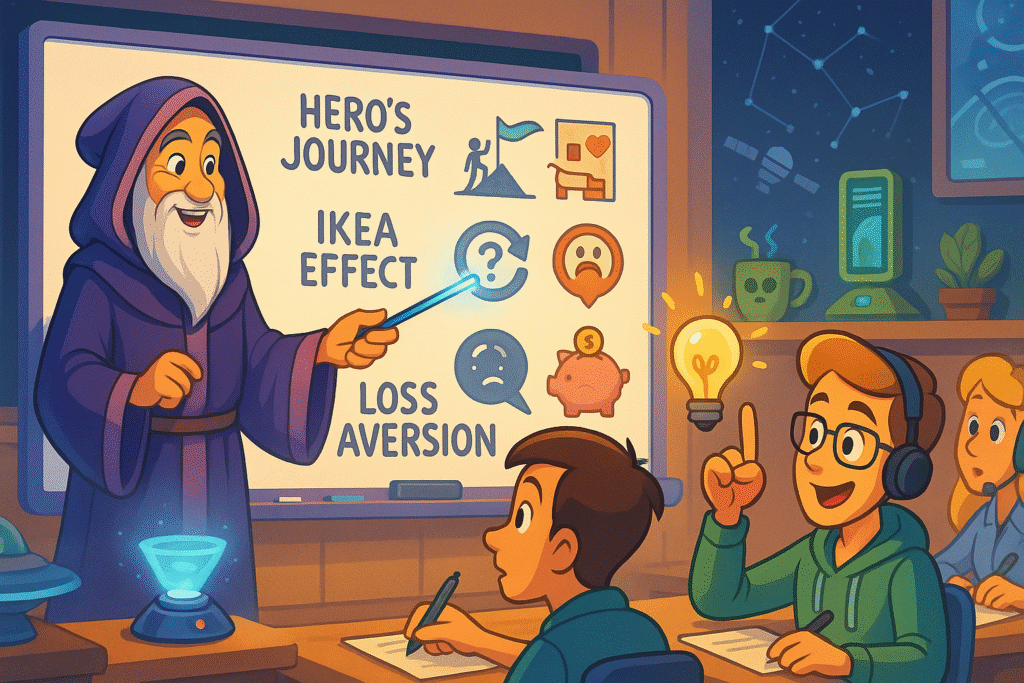
May the Fourth be with you!
(I don’t care. It’s Star Wars Day, it’s my email, and I’m sayin’ it.)
The first time I saw Obi-Wan Kenobi wave his hand at the stormtroopers and declare “These aren’t the droids you’re looking for,” I was hooked.
Not just by the scene, but by how completely I bought into this fictional “Force” that could influence weak minds.
Years later, studying behavioral psychology, I realized something: George Lucas didn’t invent mind tricks. He just gave them a cooler name.
Star Wars has dominated popular culture for 48 years because Lucas intuitively understood psychological triggers that make stories — and products — irresistible.
Consider these Jedi-level psychological moves:
The series begins in media res (Episode IV), creating a powerful curiosity gap. (More on this here.) We’re dropped into a universe with a rich, unexplained history, triggering our brain’s need for completion and context.
Loss Aversion is perhaps the most powerful Force in the Star Wars universe. The entire saga is built on the fear of losing what we cherish.
Anakin turns to the Dark Side because he fears losing Padmé.
Luke leaves his training because he fears losing his friends.
The Empire builds Death Stars because they fear losing control.
Loss aversion — our tendency to feel losses more intensely than equivalent gains — drives the plot forward. And it drives buying behavior too. When fans line up for opening night tickets or limited-edition merchandise, they’re responding to the fear of missing out on something they’ll later wish for.
The beloved characters represent universal archetypes — the reluctant hero (Luke), the mentor (Obi-Wan), the rogue (Han Solo) — allowing every viewer to see themselves in the story. It’s actually such a perfect use of the Hero’s Journey story formula that marketers and writers often use it as a teaching example.
The Force itself is brilliantly ambiguous, functioning as both science and religion. It’s specific enough to drive the plot but vague enough that fans can project their own meanings onto it.
In I Need That, I talk about how the dog brain — our emotional, impulsive system — makes most of our buying decisions before our rational mind catches up.
Star Wars mastered this approach decades before neuroscience could explain it.
The franchise triggers powerful emotions — nostalgia, belonging, wonder — that bypass logical analysis and create a feeling of need that transcends any rational assessment of plastic lightsabers or Grogu plush toys.
These aren’t mere filmmaking techniques, but an education in creating irresistible appeal.
Product Payoff: With the first licensing deal it ever did, LEGO multiplied its revenue after acquiring the Star Wars license in 1999. While many factors contributed to this growth, their understanding of psychological triggers was huge. LEGO recognized that stacking the nostalgia adults felt for both LEGO and Star Wars would create an entirely new market: premium-priced sets marketed directly to adult collectors. Today, the most expensive LEGO Star Wars sets you can buy go for US $8,000+, demonstrating how effectively they’ve leveraged psychological triggers to transform ABS bricks into must-have collectibles.
Action for today: Identify ONE psychological trigger from Star Wars that you could adapt for your product:
- Create a curiosity gap by hinting at information not yet revealed
- Use archetypal characters or scenarios your audience will recognize
- Develop a “force”-like concept that’s specific enough to be useful but ambiguous enough to be personalized
- Build opportunities for belonging through shared insider language or references
What Star Wars-inspired psychological trigger might work for YOUR product? Tap that reply arrow and share your Jedi-level marketing moves.
Or reach out to my amazing team of product strategy specialists at Graphos Product.
